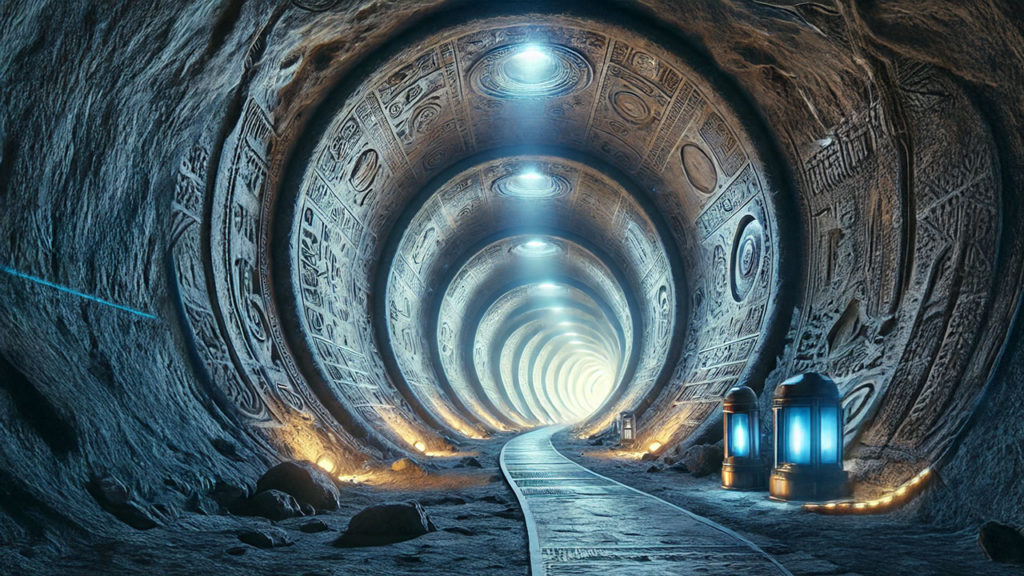Mystery of Egypt: Secrets of the First Hidden Tunnel

Radu Cinamar’s Mystery of Egypt: The First Tunnel is a captivating continuation of the Transylvanian book series, chronicling secret governmental projects, lost ancient knowledge, and contact with highly advanced civilizations. This installment, like others in the series, walks a compelling line between mysticism, conspiracy theory, and science fiction—offering readers a thought-provoking look at suppressed histories and esoteric truths buried beneath the sands of Egypt and the mountains of Romania.
A Brief Overview of the Transylvanian Series
Radu Cinamar first rose to prominence through his earlier works, such as Transylvanian Sunrise, which described the discovery of a mysterious chamber beneath the Romanian Sphinx in the Bucegi Mountains. These discoveries—supposedly made with the assistance of both Romanian and American intelligence—revealed massive halls filled with highly advanced, seemingly extraterrestrial technology, and holographic projection rooms depicting Earth’s true history.
Mystery of Egypt: The First Tunnel picks up where Transylvanian Moonrise left off. The story focuses on the next major stage in the global discovery of hidden ancient technology, involving a tunnel network linking Romania to the Giza Plateau in Egypt. This “First Tunnel” is believed to be a wormhole or interdimensional passage leading not only to Egypt but potentially to other parts of the world and beyond.
Journey Through the Tunnel
The narrative begins with Radu Cinamar being called once again into a secret government project involving Department Zero, a covert Romanian intelligence unit dealing with paranormal and extraterrestrial phenomena. Together with a character named Cezar Brad, an elite intelligence officer and psychic, Radu joins a specialized expedition to explore one of the mysterious tunnels discovered beneath the Bucegi Mountains.
This particular tunnel stretches thousands of kilometers and eventually leads to a hidden chamber deep beneath the sands of the Egyptian desert—beneath the Great Pyramid. The journey is not merely physical; it is imbued with spiritual, metaphysical, and psychological dimensions. The expedition team encounters various phenomena that challenge the limits of their perception, as well as their understanding of history, time, and space.
Ancient Technology That Looks Futuristic
What sets Mystery of Egypt apart is its vivid depiction of what lies within the Egyptian chamber. Rather than the crumbling relics of a long-lost civilization, the team discovers technology that appears far more futuristic than ancient—towering devices of unknown metals, complex holographic interfaces, and energy fields that respond to thought and emotion.
These are not simply artifacts; they are interactive tools, possibly remnants from a pre-diluvian civilization or from beings not of this Earth. According to the book, the chamber contains:
Advanced holographic projectors: Capable of displaying Earth’s true history in real-time 3D, including humanity’s extraterrestrial origins.
DNA-responsive devices: Machinery that activates only in the presence of specific genetic signatures, hinting at a deep link between ancient bloodlines and the creators of the technology.
Teleportation or interdimensional portals: Devices that allow travel across vast distances—or realities—instantly, suggesting a civilization far ahead of even our current scientific understanding.
The descriptions draw uncanny parallels to what modern scientists might call quantum computing, zero-point energy, or multidimensional physics. These elements blur the line between what we consider “ancient” and what may actually be remnants of a forgotten high-tech epoch.
Egypt’s Hidden Role in a Global Network
Cinamar also suggests that the Egyptian chamber is only one node in a global network of similar facilities. These ancient “halls of records,” located in places like Tibet, the Gobi Desert, Iraq, and Antarctica, form a kind of planetary grid—each protecting and preserving knowledge from a time when Earth’s dominant civilization was far more advanced.
The tunnels, like the one from Romania to Egypt, are not just physical passages. They are also symbolic—connecting not just places, but entire timelines and paradigms of consciousness. In this sense, The First Tunnel is a metaphor for humanity’s journey inward and upward: a descent into the planet to unlock the ascension of the soul.
Themes and Philosophical Undertones
While the book is rich in high-concept sci-fi elements and conspiracy theories, it also carries deep philosophical themes. Readers are asked to reconsider the nature of time, the suppression of knowledge, and the manipulation of history by elites throughout millennia.
Some major themes include:
The spiritual evolution of humanity: Suggesting that real progress is inward, and that ancient civilizations achieved high consciousness as well as advanced tech.
The importance of secrecy and awakening: The idea that this knowledge has been hidden deliberately and must be uncovered responsibly.
The multidimensional nature of reality: Emphasizing that linear thinking cannot comprehend the totality of existence revealed in the tunnels.
Criticism and Interpretation
Like the other books in the series, Mystery of Egypt is often met with skepticism by mainstream historians and scientists. Critics label it pseudoscience or pure fantasy. However, Cinamar’s narrative is not easily dismissed. The detail, consistency, and inner logic of the story give it the texture of a documentary, leaving readers to wonder: What if this is true?
To fans and open-minded readers, the book is a treasure trove—an invitation to think beyond academic boundaries, question the accepted version of history, and explore hidden truths with courage and curiosity.
Mystery of Egypt: The First Tunnel is a riveting and ambitious book that blends ancient wisdom with modern-day intrigue. Whether you interpret it as literal truth, allegory, or visionary fiction, its impact is undeniable. It invites a deeper inquiry into who we are, where we come from, and what astonishing truths may still be waiting for us—just beneath the surface of the Earth.
